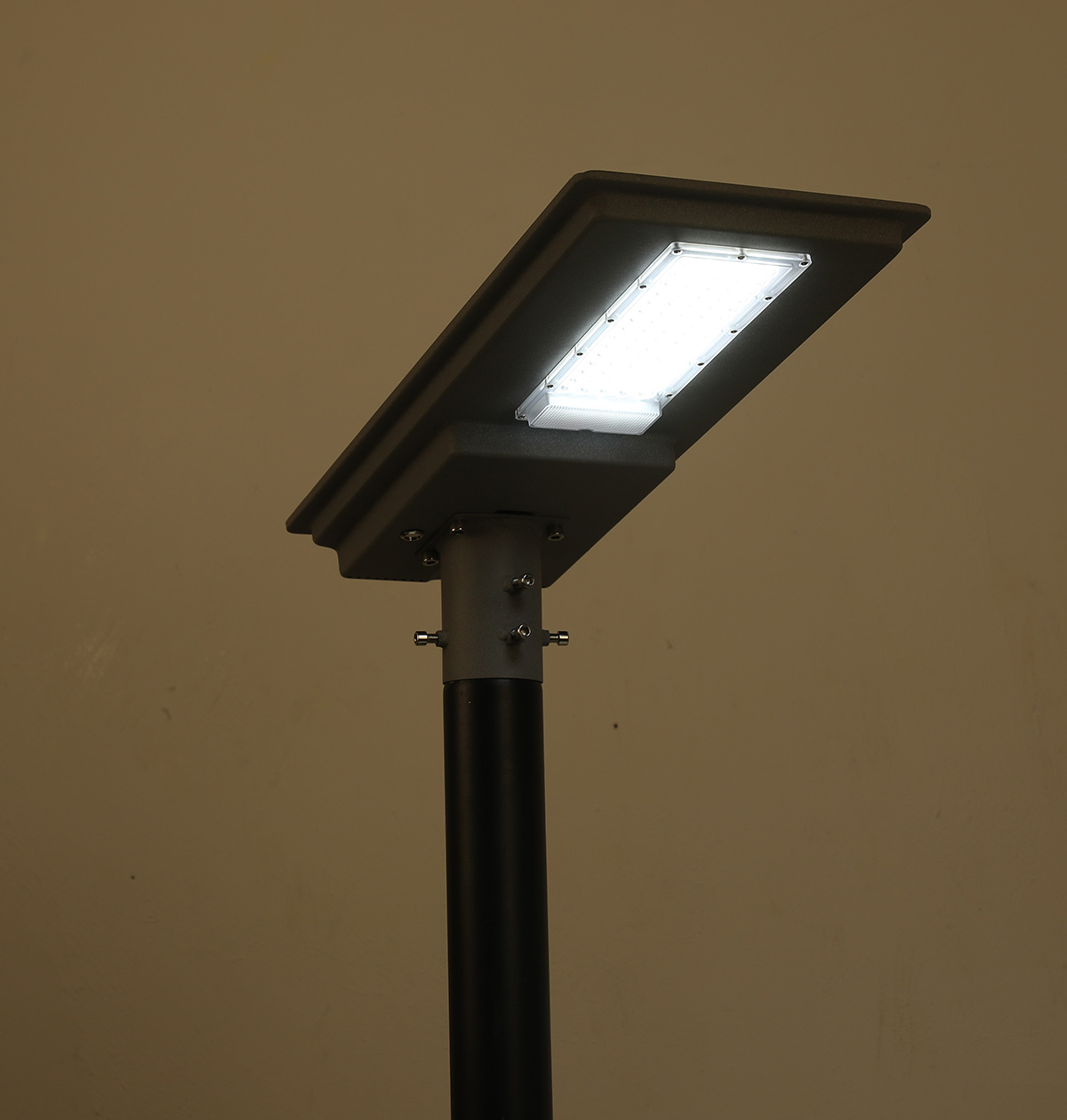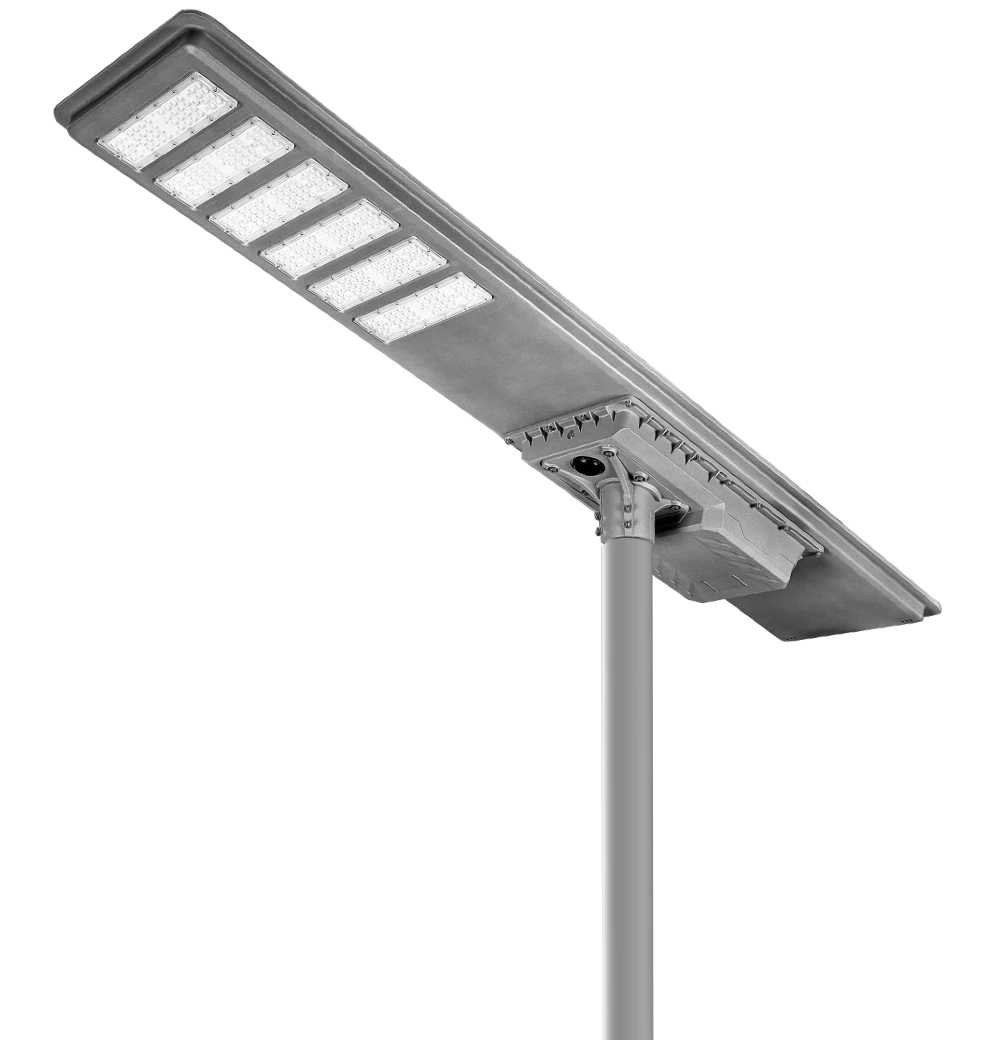Common Failures in Solar Street Lights and How to Troubleshoot Them
Discover the most frequent issues in solar street lights and learn effective troubleshooting tips for batteries, LED drivers, solar panels, and more. Improve performance and extend lifespan.
Solar street lights are widely used for their energy efficiency, low maintenance, and off-grid capabilities. However, like any electronic system, they can encounter issues over time. This guide explains the most common failures in solar street lighting systems and how to troubleshoot them effectively.

1. Battery Failure
Symptoms:
- Light doesn't turn on at night
- Short lighting duration
- Faint or flickering light
Causes: Aged batteries, overcharging/discharging, poor-quality components.
Troubleshooting: Check voltage (12V LiFePO₄ should read ~13.6V). Replace if <10.5V. Use high-quality LiFePO₄ batteries.
2. LED or Driver Malfunction
Symptoms: Flickering lights, partial illumination, overheating.
Causes: Damaged LED chips or drivers, poor heat dissipation, power surges.
Troubleshooting: Measure driver output voltage, replace faulty parts, use better thermal design.
3. Solar Panel Not Charging
Symptoms: No battery charging during the day, no voltage rise, error codes.
Causes: Dust or shading, broken PV cells, loose connectors.
Troubleshooting: Clean regularly, check panel open-circuit voltage (18–22V for 12V systems), replace damaged panels.
4. Controller or Sensor Malfunction
Symptoms: Lights on during daytime, off at night, random operation.
Causes: Faulty light sensor, water damage, firmware bugs.
Troubleshooting: Reset controller, reconfigure settings, use waterproof MPPT smart controllers.
5. Wiring and Installation Errors
Symptoms: No operation, intermittent faults, sparks or ground faults.
Causes: Loose terminals, reversed polarity, undersized or corroded wires.
Troubleshooting: Verify all connections and polarity, replace poor wires, seal with silicone.
6. Environmental Damage or Vandalism
Symptoms: Broken glass or panels, missing batteries, early failure.
Causes: Wind, hail, heat, theft, poor mounting.
Troubleshooting: Use vandal-resistant designs, anti-theft brackets, and IP66+ housings.
Preventive Maintenance Tips
- Clean panels every 2–3 months
- Battery check every 6–12 months
- Quarterly cable inspection
- Firmware updates when available
- Keep maintenance logs
-

Conclusion
Understanding common failures—whether it's the battery, solar panel, LED, or controller—helps reduce downtime and saves costs. Always choose certified, reputable manufacturers for optimal long-term performance.
Frequently Asked Questions (FAQ)
Q1: What is the average lifespan of a solar street light?
A: Around 10–15 years, with the battery typically replaced every 5–8 years.
Q2: Can I repair a failed solar light myself?
A: Minor issues like cleaning panels or replacing batteries can be DIY. For major issues, consult the manufacturer.
Q3: Why do my lights turn on during the day?
A: The light sensor or controller may be faulty or incorrectly programmed.
Q4: Is it worth buying lights with smart MPPT controllers?
A: Yes, MPPT controllers improve charging efficiency and protect the battery.
Q5: How can I avoid failures from the start?
A: Buy from certified suppliers with branded components and request test reports before shipment.

Have more questions about our products or services?
The latest hot news you might like

Discover how solar panels power street lights, exploring the technology behind solar energy conversion, storage systems, and how solar-powered street lights are revolutionizing urban and rural lighting solutions.

Learn how AC Solar Hybrid Street Lights work, their advantages, disadvantages, system behavior in low-sunlight conditions, and why hybrid technology is ideal for regions with unstable sunlight.

Municipalities around the world are increasingly adopting solar-powered streetlights as part of their urban development strategies. Rising energy costs, the need for sustainable infrastructure, and government green initiatives are driving cities to switch from traditional street lighting to advanced LED solar streetlights.
Queneng Lighting provides municipalities with cost-effective, energy-efficient, and durable solar lighting solutions, ensuring safe and sustainable public spaces.

In recent years, the purchase of solar streetlights for municipalities has become a growing trend across the globe. Local governments are under pressure to reduce public expenditure, promote green energy, and create safer communities. Solar streetlights provide a reliable, cost-effective, and sustainable solution that meets these needs. Queneng Lighting, as a leading solar street lighting manufacturer, has supported multiple municipal projects worldwide with customized and energy-efficient solutions.
FAQ
who we are
How can I contact Queneng for inquiries or product support?
You can contact us through our website, where you can find contact forms, customer service phone numbers, and email addresses. Our support team is available to assist with any inquiries, product information, or technical support you may need.
Battery and Analysis
What is over-discharge and what effect does it have on battery performance?
What are the characteristics of rechargeable portable batteries?
There are rechargeable portable batteries in different electrochemical types, such as lead-acid type (2V/unit), nickel-cadmium type (1.2V/unit), nickel-hydrogen type (1.2V/unit), lithium-ion battery (3.6V/unit) ), the typical characteristic of these types of batteries is that they have a relatively constant discharge voltage (there is a voltage platform during discharge), and the voltage decays quickly at the beginning and end of discharge.
Solar Street Light Luyan
Can Luyan solar street lights function in areas with limited sunlight or cloudy weather?
Yes, Luyan solar street lights are designed to function reliably even in areas with limited sunlight or during cloudy weather. The high-efficiency solar panels can capture and store energy even in low-light conditions, ensuring that the lights will still provide illumination during cloudy or rainy days. The system is equipped with a battery that stores enough energy to keep the lights running throughout the night, regardless of weather conditions, making it suitable for diverse climates.
What types of batteries are used in Luyan solar street lights, and how do they work?
Luyan solar street lights use high-quality lithium-ion batteries. These batteries store the solar energy captured during the day and provide reliable illumination at night. Lithium-ion batteries are known for their longer lifespan, faster charging times, and better energy storage compared to traditional lead-acid batteries.
Solar Street Light Lulin
How durable are Lulin solar street lights?
Lulin solar street lights are built to last. They are constructed using corrosion-resistant aluminum and high-strength tempered glass, making them durable enough to withstand harsh weather conditions, including rain, snow, and extreme temperatures. The lights are also designed to resist UV rays, dust, and other environmental factors, offering a long service life in both urban and rural settings.

Queneng's Luzhou Solar Street Light provides sustainable, energy-efficient outdoor LED lighting. Powered by solar energy, it's a cost-effective and eco-friendly solution for illuminating streets and pathways. A reliable and durable LED solar street light.
If you would like more information about Queneng solar lighting solutions, please send us a message by filling out the form below. Our professional team will get back to you within 24 hours!
Rest assured that your privacy is important to us, and all information provided will be handled with the utmost confidentiality.
Schedule a Meeting

Book a date and time that is convenient for you and conduct the session in advance.
Have more questions about our products or services?





















